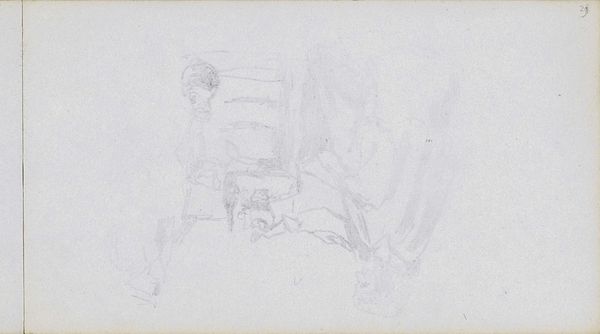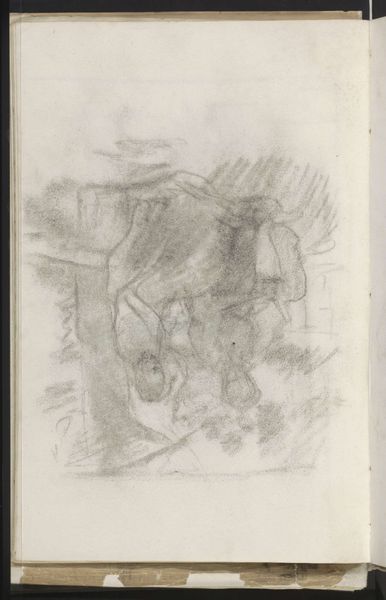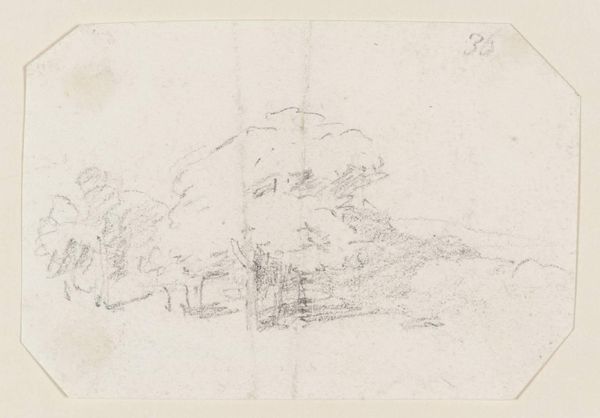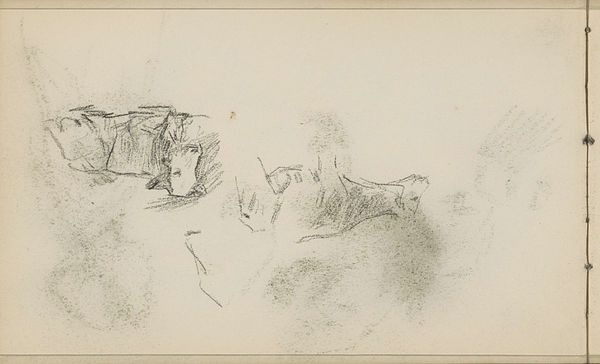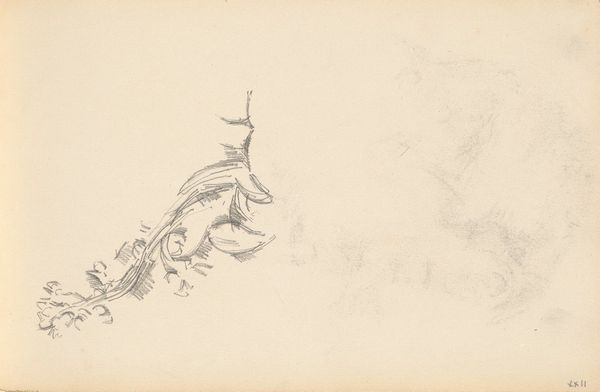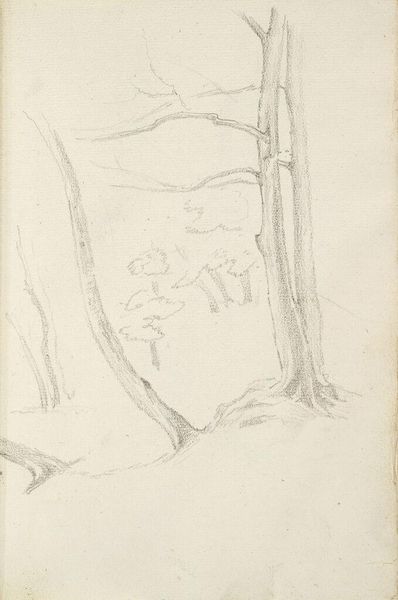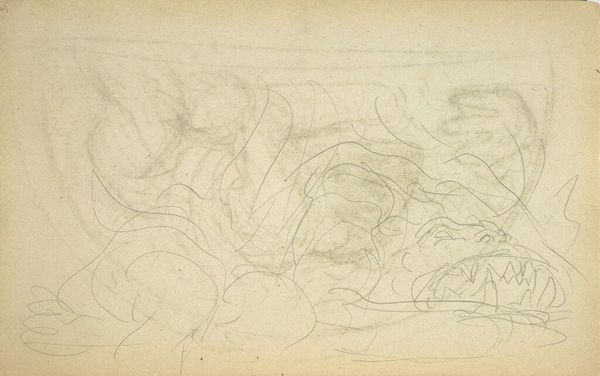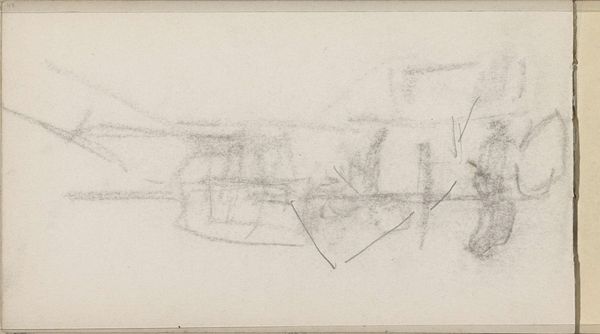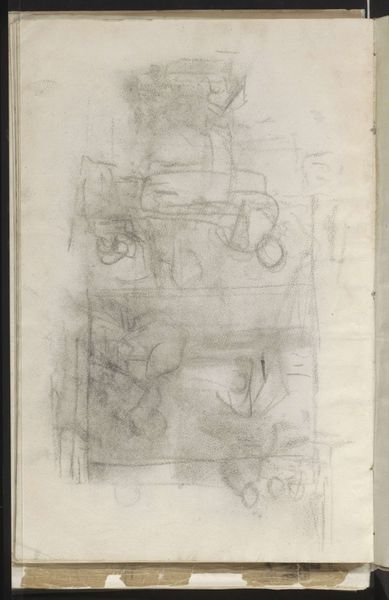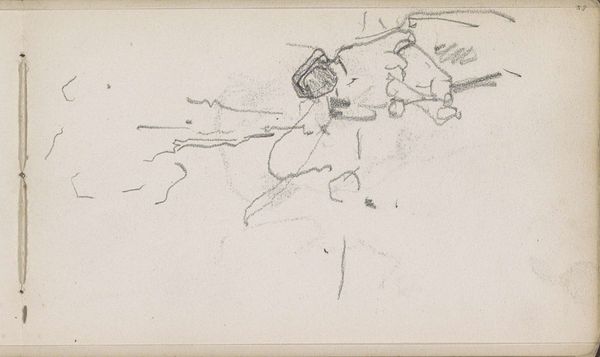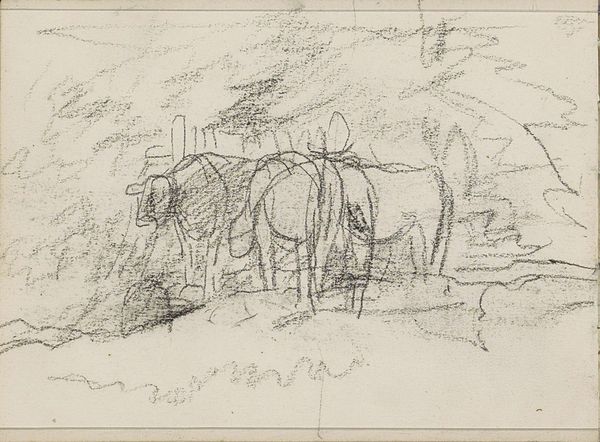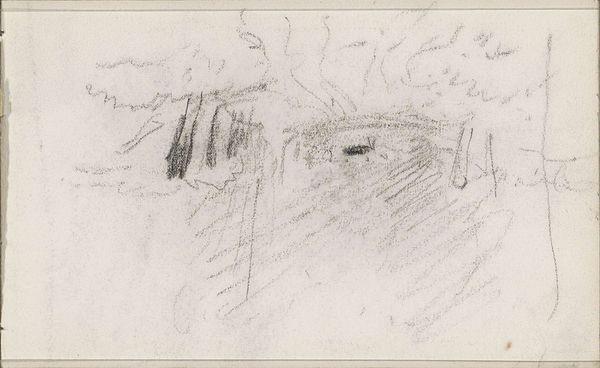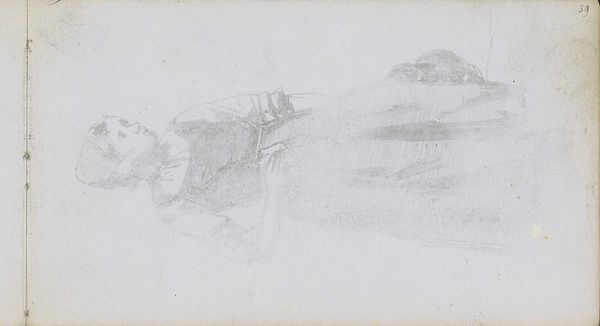
Copyright: Rijks Museum: Open Domain
Curator: Let's turn our attention to "Abklatsch van de tekening op pagina 3 recto," a drawing attributed to Johan Hendrik Weissenbruch, created sometime between 1834 and 1903. Editor: My initial impression is one of ethereality. The pencil lines are so faint, it's as if the image is barely clinging to the paper. There is a ghostliness in its execution that evokes a sense of stillness. Curator: It’s interesting you say that, as Weissenbruch was working during a period where the public perception of landscape art was rapidly shifting. The direct, unadorned approach visible in his drawings represented a desire to present an authentic reflection of the Dutch countryside. Sketchbooks became tools not for elaborate allegories but studies of specific locations. Editor: The almost haphazard strokes, like whispers on the page, convey this wonderfully. See the use of layering, with lines going in every direction, building texture with incredible efficiency. He really used the tonal range of the pencil well! Curator: Indeed! There’s a raw, almost democratic spirit in his work; here in front of us a landscape emerges from humble, unpretentious materials—pencil and paper—mirroring, in many respects, the social changes taking place in the Netherlands. Editor: Although sketchy, it succeeds to build an airy depth—see how the composition opens itself toward the distance—or the sense of space is enhanced. One could lose himself in trying to read it! Curator: It provides an incredible insight into how artist prepared for paintings. You get to see that process. I suppose there is also a degree of intimacy knowing this might never have been made for the public eye, just to himself. Editor: It almost compels you to look deeper, seeking to find resolution within its delicate texture and lines. Curator: It's fascinating to view this sketch as a visual record that captures not just a location, but an epochal shift in Dutch art and its relationship to national identity. Editor: An unassuming but rewarding look behind the veil into the artist's gaze.
Comments
No comments
Be the first to comment and join the conversation on the ultimate creative platform.
